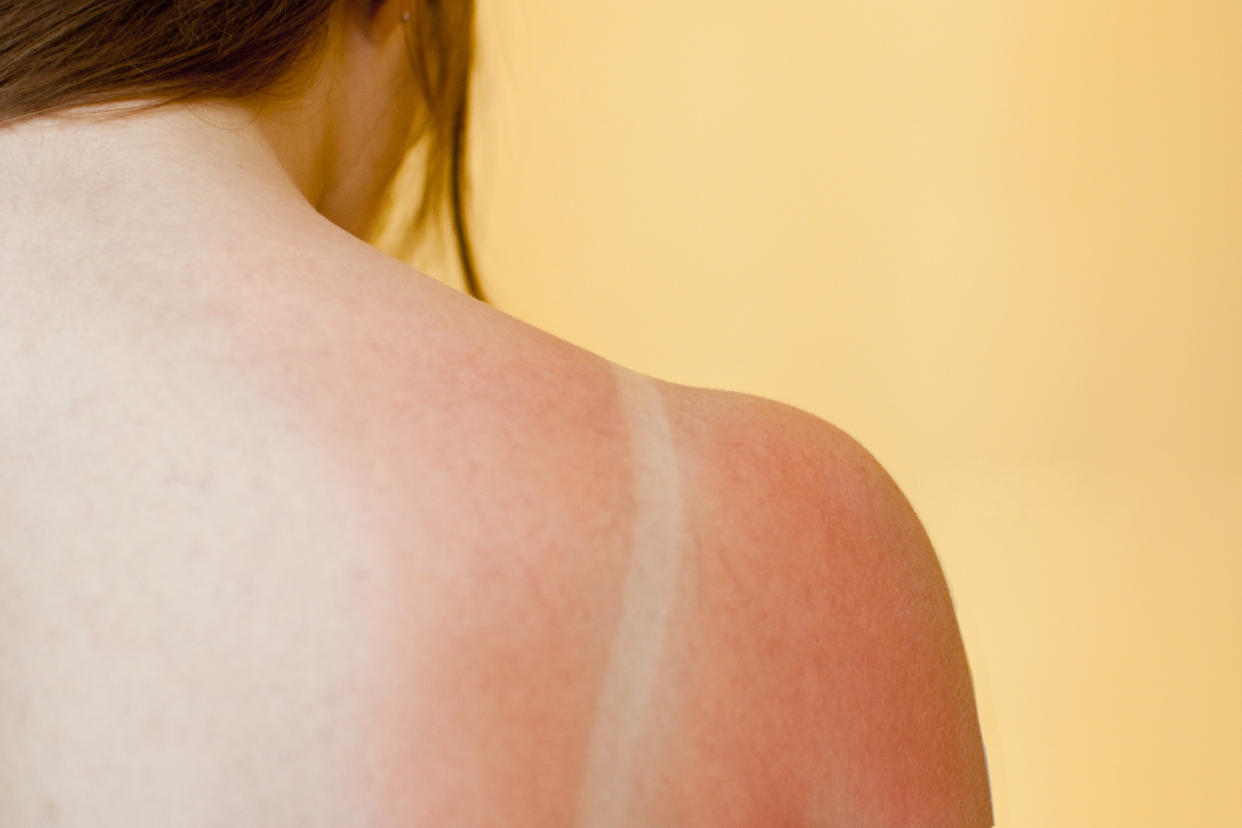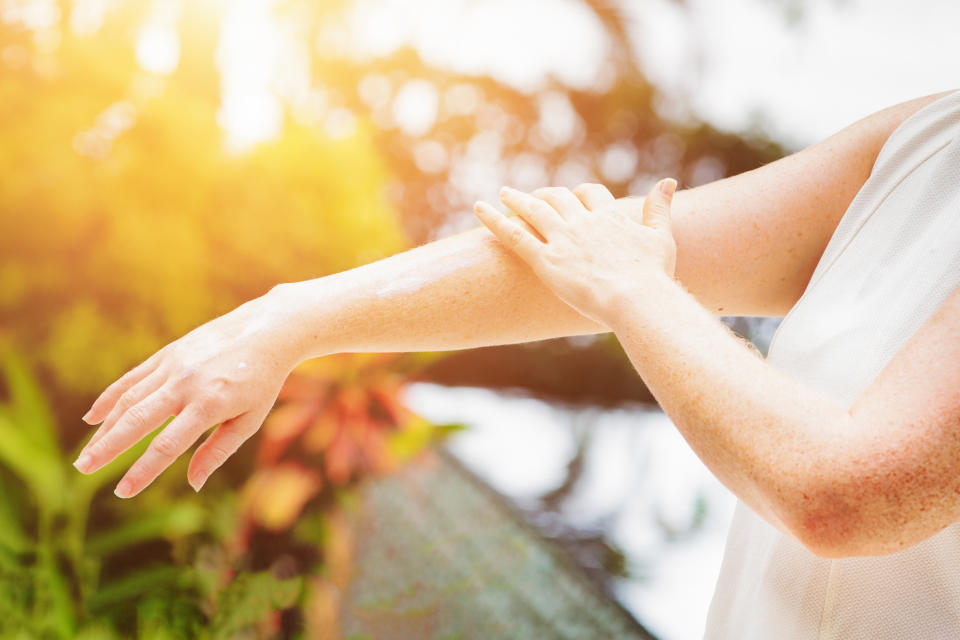How to successfully treat sunburn

With temperatures soaring to record highs this week, Brits have been escaping the confines of coronavirus quarantine to head outside and enjoy the sun.
But the joy at more relaxed lockdown measures meaning we’re actually allowed to sit and sunbathe has given way to pain, as many of us were caught unprepared by the balmy May temperatures and forgot to slather on the SPF.
Cue some pretty nasty sunburn.
From painful, red skin to weeping blisters, sunburn can not only be sore but it can also cause some pretty concerning long-lasting damage.
Plus lying out in the sun without the appropriate protection could increase your risk of suffering from skin cancer with Cancer Research UK warning getting sunburnt just once every two years could triple your risk of melanoma.
Read more: How to get a good night’s sleep in the heat
“Sunburn is skin damage and your body’s response to try to repair it,” Cancer Research UK explains. “It’s a short-term warning for potential long-term DNA damage, and is a clear sign that the DNA in your skin cells has been damaged by too much UV radiation.”
Yikes!
While prevention (ie not getting burnt in the first place) is the best ‘treatment’ for sunburn, there are some things you can do if you notice you’re a little on the red side.
“It's important to stress that people should take measures to avoiding getting sunburnt in the first place by ensuring they use adequate sun cream or avoid being in the direct sun, as this can damage the skin and lead to skin cancer,” explains Dr Sonal Shah, NHS GP and lifestyle medicine expert.
Read more: Your waterproof sunscreen might not be all that protective
But, if you do get burnt Dr Shah recommends following these simple steps:
Try to cool down the skin with cold compresses or cold flannels, be careful not to apply ice directly to the skin.
Apply aftersun or aloe vera gel to the skin to help soothe it, a good tip is to leave after sun cream in the fridge, so when applied to the skin it can soothe any discomfort.
Buy treatments over the counter that contain silver sulfadiazine which can help with burns.
Take paracetamol, ibuprofen or antihistamine to stop the pain and itching may help.
Avoid picking or bursting blisters, as this may expose the area and lead to infection.
Keep the area clean and dry, and wear loose fitting clothing to avoid things rubbing over the area.
Avoid things like vaseline or toothpaste.
Dr Shah says the symptoms should improve in a few days, but if the area remains red, tender or appears wet and infected she suggests consult your doctor or pharmacist for more advice.

Read more: Your sun protection guide: SPF, UVB and UVA explained
The NHS has some further advice about the things you should and shouldn’t do when treating sunburn.
Do
get out of the sun as soon as possible
apply aftersun cream or spray, like aloe vera
drink plenty of water to cool down and prevent dehydration.
cover sunburnt skin from direct sunlight until skin has fully healed
Don't
do not put ice or ice packs on sunburnt skin
do not scratch or try to remove peeling skin



